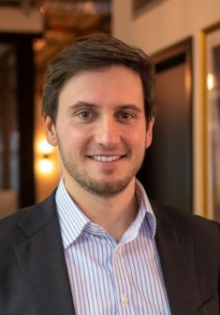Paderborn University research project presents product at the European Microwave Week
Precise signals for data transmission are essential for measurement technology, radar systems and telecommunications. In the ‘RadiOptics’ research project, which was launched last June at the Heinz Nixdorf Institute at Paderborn University and from which QuSinus GmbH emerged, scientists are therefore working on a signal generator that aims to reduce potential sources of error. Those responsible are now presenting their product for the first time at the European Microwave Week EuMW in Paris. EuMW, which runs from 22 to 27 September, is the largest scientific conference and trade fair in the field of high-frequency technology in Europe.
Signal generators are laboratory devices that are used as test equipment in product development. Their field of application, which ranges from mobile telephony to quantum computing and aerospace, is vast, which is why the requirements are correspondingly high. The signal generator will initially be used primarily in research and development. The project is being funded by the EXIST research transfer programme of the Federal Ministry of Economics and Climate Protection (BMWK) to the tune of around 849,000 euros. EXIST supports outstanding scientific start-up projects from the initial idea to the founding of a company.
‘The presentation of a ‘live demo’ at EuMW, where we can show interested parties the performance of the product, is a milestone for the spin-off project. For the first time, we are not just presenting our product in a brochure - but directly on site,’ says Dr Peter Hertenstein from the “Circuit Technology” department at the Heinz Nixdorf Institute. The frequency range of the signal generator is twelve gigahertz (GHz). ‘We have minimised the phase noise, which can lead to data transmission errors. At ten GHz, we achieve values that improve conventional signal generators by a factor of ten to a hundred,’ explains Hertenstein. ‘This makes us ‘best in class’ on the market and sets completely new standards.’ The so-called jitter, which can lead to deviations or delays in the transmission of digital signals as clock jitter, is also only three femtoseconds. ‘That's around ten times more accurate than previous technologies,’ says Hertenstein.
This text has been translated automatically.


